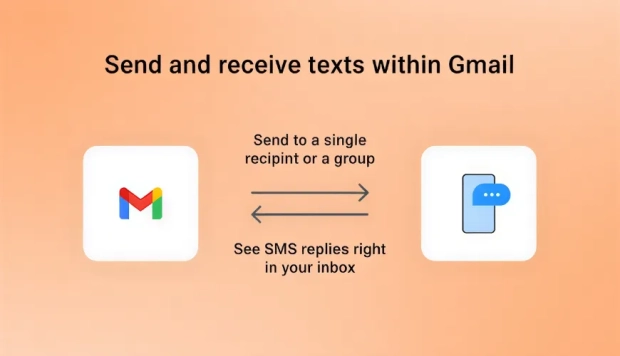Smart Ways to Connect Google Ads and Email Marketing

Digital marketing is most effective when strategies work in harmony. While Google Ads and email marketing are powerful on their own, connecting them can yield exponential results. These two channels often serve different stages of the customer journey, Google Ads attracting new leads and email marketing nurtures them, but when aligned, they reinforce one another and create a seamless experience for your audience.
Businesses that strategically integrate their paid advertising with email campaigns enjoy improved targeting, higher engagement rates, and greater ROI. By using data from each platform to inform the other, marketers can develop highly personalized, efficient campaigns that drive both conversions and long-term loyalty.
Start With a Unified Strategy and Clear Goals
To successfully integrate Google Ads and email marketing, start by identifying how each channel supports your broader marketing objectives. Are you trying to build brand awareness, retarget abandoned carts, or re-engage past customers? Each goal may require a different approach, so clarity is important from the outset.
Establishing a clear strategy helps determine how data will flow between platforms, what KPIs to measure, and how success will be defined. If your goal is to increase e-commerce conversions, you might use Google Ads to attract new visitors and then follow up via email with product recommendations or time-sensitive discounts. Working with a Google Ads consultant in Lexington or a place near you can help ensure this alignment is both technically sound and strategically optimized. Consultants understand how to set up conversion tracking, manage customer segmentation, and align campaign messaging to maximize results.
Use Ads to Build Your Email List
One of the most effective ways to connect the two platforms is by using Google Ads to grow your email list. By directing paid traffic to a landing page with a lead magnet, such as a free guide, discount code, or exclusive content, you can capture email addresses from interested users who aren't ready to make a purchase just yet.
Once those contacts are added to your email marketing platform, they can enter an automated welcome series or nurture campaign. These follow-up emails can build trust, offer additional value, and eventually drive sales. Because the initial traffic was paid, capturing the lead ensures you're not wasting ad spend on one-time visitors.
Make sure your landing page is optimized for conversions, with clear calls to action and minimal distractions. The smoother the user experience, the more likely you are to capture valuable leads.
Leverage Customer Match for Better Targeting
Google Ads allows marketers to upload email lists to create Customer Match audiences. This feature lets you serve targeted ads to users who have already interacted with your brand via email. It's a powerful way to reinforce your messaging and stay top of mind with warm leads.
If someone opened your promotional email but didn't click through, you can show them a Google Display Ad reminding them of the offer. Or, if a customer recently purchased a product, you can serve ads for complementary items or subscription upgrades.
Customer Match allows for exclusions. You can remove existing customers from certain campaigns, ensuring your acquisition-focused ads only reach new prospects, thus making your budget more efficient.
Automate Ad Campaigns Based on Email Behavior
Advanced marketers use behavioral triggers in their email systems to activate or adjust Google Ad campaigns. If a subscriber clicks on a particular product in an email but doesn't purchase, that action can automatically trigger a remarketing campaign with product-focused display ads.
These dynamic campaigns keep your brand visible during key decision-making windows. By connecting your email platform to Google Ads through integrations or APIs, you can automate much of this behavior-driven advertising, ensuring timely, relevant messaging without constant manual adjustments.
The result is a marketing ecosystem that responds to user interest in real time, increasing the chances of conversion while enhancing the customer experience.
Beyond running ad campaigns, it's also worth considering how to offer your audience extra value. For example, sharing curated promotions and coupon codes for cheap games can help keep readers engaged. Bonus content like this often drives higher interaction rates and improves overall user experience.
Align Messaging and Branding Across Channels
Consistency is crucial in digital marketing. Your Google Ads and email campaigns should reflect the same tone, visuals, and calls to action. Disjointed messaging can confuse users and reduce trust in your brand.
When running a promotional campaign or launching a new product, coordinate the timing and creative elements across both platforms. If an ad offers 20% off, make sure the email follow-up highlights the same discount with a similar design and language. This reinforcement builds familiarity and makes your marketing feel intentional and cohesive.
Monitor Performance and Optimize Together
To truly benefit from integrating Google Ads and email marketing, it's important to track the performance of both channels in relation to one another. Use UTM parameters in your ads to monitor traffic behavior in your email platform and track how well email-generated audiences perform within Google Ads.
Watch for patterns, such as which audiences respond best to retargeting or which ad creatives lead to higher email open rates when used in tandem. These insights can guide future decisions, helping you refine content, segment audiences more effectively, and increase your return on investment.
Integrating Google Ads with email marketing offers a smarter, more connected approach to customer engagement. Together, these channels can help businesses attract, nurture, and convert leads more efficiently than either could alone. With the right strategy, tools, and professional guidance, this integration boosts marketing performance and transforms how businesses build relationships with their audience.



